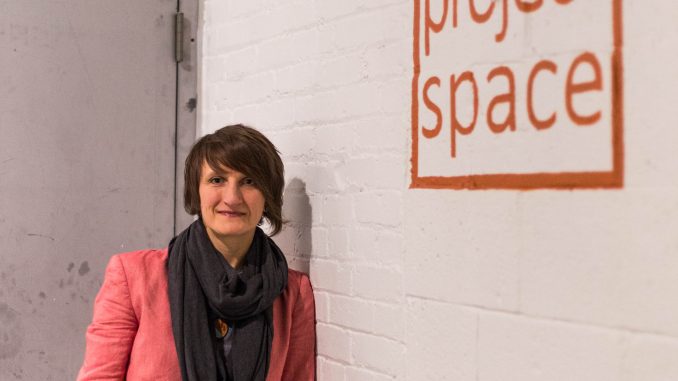
In 1967, the United States Supreme Court heard the case Katz v. United States, in which citizens’ “right to privacy” was in question as FBI agents eavesdropped on Charles Katz’s private conversation in a phone booth.
The court decided 7-1 that the FBI violated Katz’s Fourth Amendment right, which protects individuals and their belongings from unreasonable searches and seizures without a warrant.
Lisa Marie Patzer, a 2013 master’s of film and media arts alumna, said this historical moment inspired her recent artwork.
“As a culture, we are becoming more and more comfortable with technology, seamlessly crossing various thresholds between what is public and private about our lives,” Patzer wrote in an email.
Last month, the Icebox Project Space — a contemporary multimedia gallery at the Crane Arts Center on American Street near Master — announced that Patzer is the recipient of its 2018 Video Residency Program. The program, in its inaugural year, provides support for artists to create work using the gallery’s multimedia projection system.
Patzer’s installation in the space, “A Reasonable Expectation of Privacy,” explores the Katz v. United States case. The video installation — which will consist of a 100-by-20-foot video project that will play on loop. The project will showcase the ways in which surveillance technology can influence how people interact with one another in private and public spaces.
The opening reception will be held at the Icebox Project Space in July, and the video will be on display until the end of the month.
Patzer is currently producing the installation. The end goal is to have the audience question what a reasonable expectation of privacy is in 2018.
“I hope my audience reflects more on themselves and their surroundings,” said Patzer, who also works as the director of web communications for the Penn Wharton Public Policy Initiative. “I want to create more dialogue on what’s happening right now in our society in terms of surveillance.”
The digital media artist’s past exhibits include videographies and interactive new media projects, like “Profile Bot,” which was on display at the Philadelphia Museum of Art last year. The exhibit allowed participants to submit a photograph of themselves to a robot, which would then draw the individual using abstract lines and dots. The exhibit commented on the reductive and flawed process of automation, a technology process performed without human assistance, she said.
“Right now I’m fully invested in the Icebox Residency and seeing what comes of it, because it’s a little bit of a mystery,” she added. “It’s a great opportunity and a fantastic space. I am very fortunate to have it.”
At a young age, Patzer was surrounded by artists. Her mother is a musician and her great uncle is a painter. She said she was brought up working on different types of creative activities, like music and theater.
Upon finishing high school in the mid-1990s, Patzer’s interest in emerging digital media developed into the process of marrying technology and art.
“My experience in theater and music had evolved into performance art when I began recording myself with a camera,” Patzer said. “This kind of led down the path of video art and the relationship between technology and the body.”
Patzer has used web, video and mixed media to create projects that question the relationship between personal and public space, as well as identity politics, technology and independence in the 21st century.
Timothy Belknap and Ryan McCartney have been the co-directors of Icebox since 2013. McCartney said choosing the recipient for the video residency was “not an easy decision” because of the strong competition and compelling work from many different artists.
“We ultimately chose Lisa Marie Patzer because of the high quality of her work, her ambition, both in scale and content, and specifically in regarding exactly how she would utilize the time allotted with the residency,” McCartney wrote in an email.
Patzer said she is most excited about the “technical and spatial aspects to the gallery.”
“They have a sophisticated video system,” Patzer said. “I’m creating site-specific work and so I’m going into the space. … I’m figuring out what works and what doesn’t.”
Patzer hopes her work will provoke her audience to reflect on themselves.
“Technology has changed the way we experience ourselves in our society,” Patzer said. “I want to continue to explore how we use technology as a tool to make work, but also exploring how it functions and impacts our lives.”


Be the first to comment